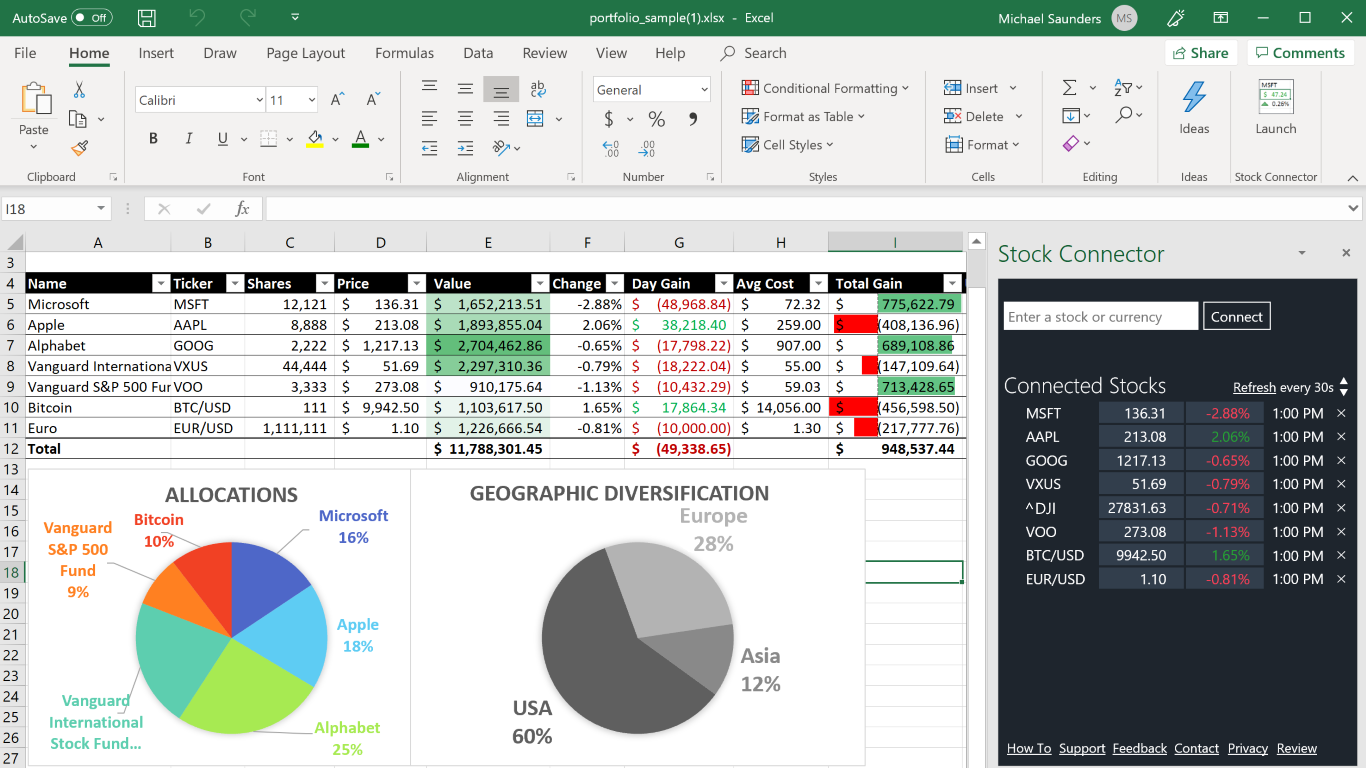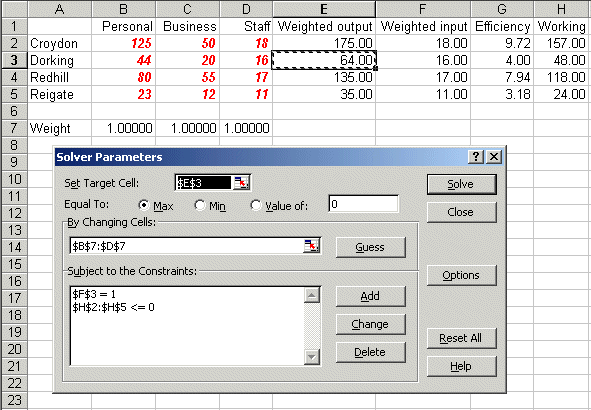

In the Solver Parameters dialog box, click the constraint that you want to change or delete.You can change or delete an existing constraint by doing the following: Note You can apply the int, bin, and dif relationships only in constraints on decision variable cells. To accept the constraint and return to the Solver Parameters dialog box, click OK.To accept the constraint and add another, click Add.If you choose = for the relationship in the Constraint box, type a number, a cell reference or name, or a formula.If you click dif, alldifferent appears in the Constraint box. If you click bin, binary appears in the Constraint box.


In the Solver Parameters dialog box, click Add.In the Subject to the Constraints box, enter any constraints that you want to apply by doing the following:.You can specify up to 200 variable cells. The variable cells must be related directly or indirectly to the objective cell. Separate the non-adjacent references with commas. In the By Changing Variable Cells box, enter a name or reference for each decision variable cell range.If you want the objective cell to be a certain value, click Value of, and then type the value in the box.If you want the value of the objective cell to be as small as possible, click Min.If you want the value of the objective cell to be as large as possible, click Max.The objective cell must contain a formula. In the Set Objective box, enter a cell reference or name for the objective cell.Note: If the Solver command or the Analysis group is not available, you need to activate the Solver add-in. Objective cell After Solver runs, the new values are as follows. The values in the variable cells are used to calculate the profit for each quarter, so they are related to the formula objective cell F7, =SUM (Q1 Profit:Q2 Profit). Solver can change the quarterly budgets for advertising (decision variable cells B5:C5), up to a total budget constraint of $20,000 (cell F5), until the total profit (objective cell F7) reaches the maximum possible amount. Note: In the following example, the level of advertising in each quarter affects the number of units sold, indirectly determining the amount of sales revenue, the associated expenses, and the profit. For example, you can change the amount of your projected advertising budget and see the effect on your projected profit amount. Put simply, you can use Solver to determine the maximum or minimum value of one cell by changing other cells. Solver adjusts the values in the decision variable cells to satisfy the limits on constraint cells and produce the result you want for the objective cell. Solver works with a group of cells, called decision variables or simply variable cells that are used in computing the formulas in the objective and constraint cells. Use Solver to find an optimal (maximum or minimum) value for a formula in one cell - called the objective cell - subject to constraints, or limits, on the values of other formula cells on a worksheet.
#GETTING SOLVER FOR EXCEL MAC FOR MAC#
Click Tools, and then click Add-Ins.Įxcel for Office 365 Excel for Office 365 for Mac Excel 2019 Excel 2016 Excel 2019 for Mac Excel 2013 Excel 2010 Excel 2007 Excel 2016 for Mac Excel for Mac 2011 Solver is a Microsoft Excel add-in program you can use for what-if analysis. So I clicked "Browse" on the bottom and select Solver.Xlam.Īfter this error pops up, the location it is looking for Solver.Xlam at resets to the previous location.If the add-ins are available in the Excel for Mac installation that you are using, follow these steps to locate them: Start Excel for Mac.

When I search on OSX I find the solver is at /Applications/Microsoft Office 2011/Office/Add-Ins. I realized that the address it thinks the solver is at is where the solver is on my PC, but not where it is on OSX. I went into the developer side, and went to Tools -> Reference, and found that Solver.Xlam is missing.
#GETTING SOLVER FOR EXCEL MAC PC#
I remembered this happening on the PC side before I enabled the solver, so I went into Tools -> Add-ins and then enabled the Solver.Xlam. When I tried to compile the project, it says "Compile Error: Can't find Project or Library". I then tried to use this same program on Excel 2011, and ran into an issue. I made sure it worked on both Excel 2010 and Excel 2013 for PC. I created a program in Excel 2010 on my PC that relies on the built-in solver for Excel.


 0 kommentar(er)
0 kommentar(er)
